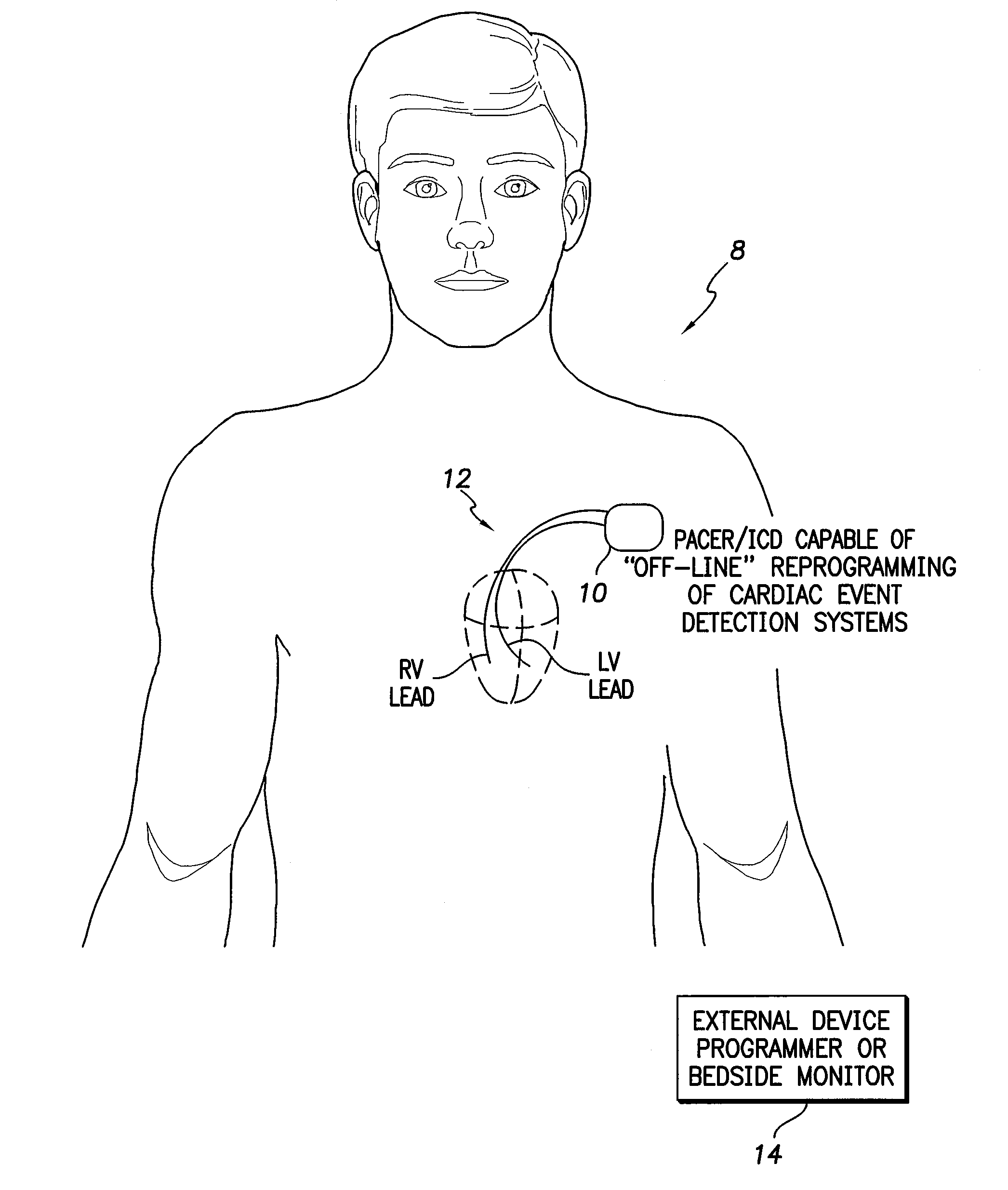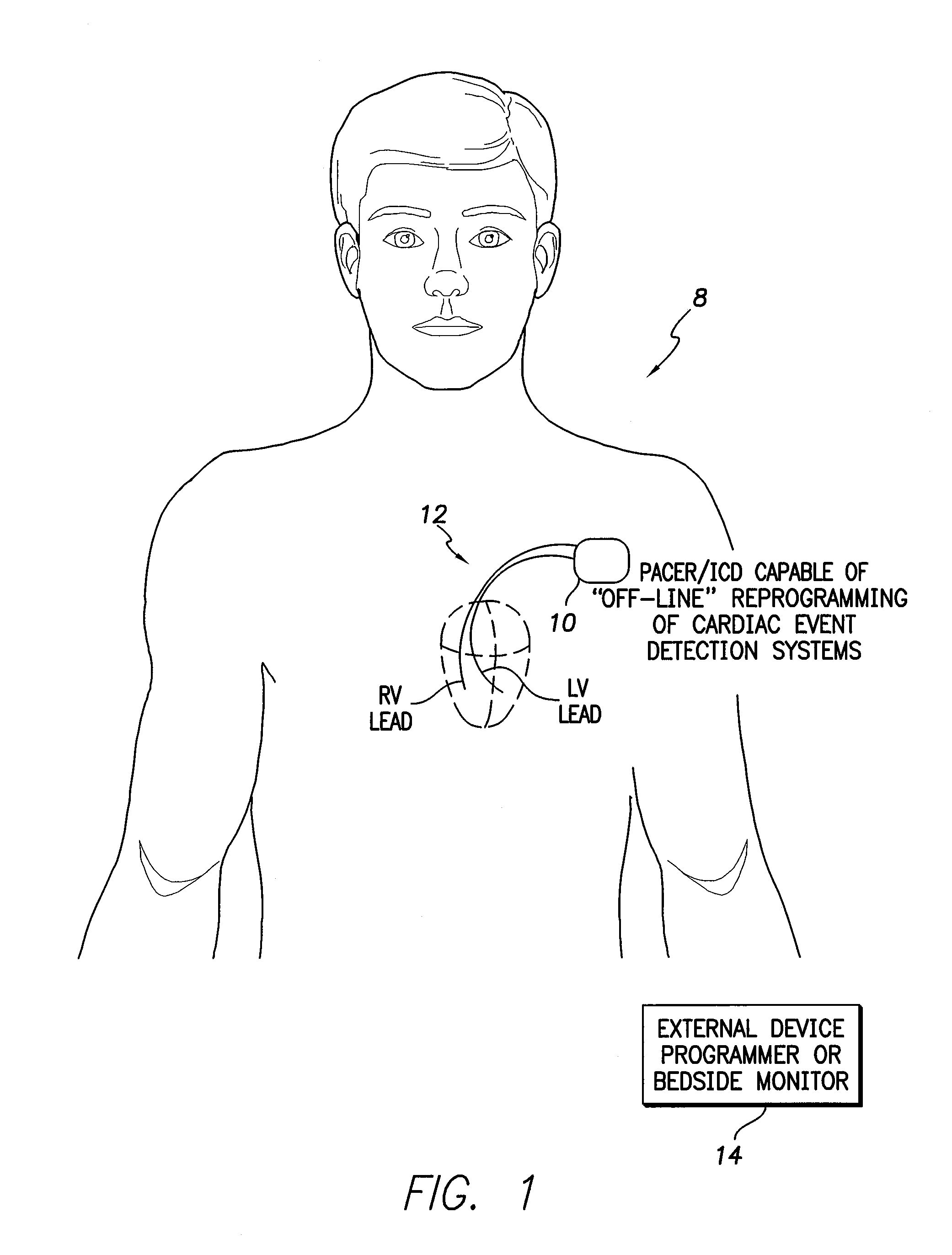Systems and methods for off-line reprogramming of implantable medical device components to reduce false detections of cardiac events
a medical device and component technology, applied in the field of implantable medical devices, can solve the problems ofp-waves and r-waves, false detection of arrhythmias, pacs, pvcs, etc., and achieve the effect of reducing false detections due to sensitivity problems, preventing further false detections, and freeing memory resources
- Summary
- Abstract
- Description
- Claims
- Application Information
AI Technical Summary
Benefits of technology
Problems solved by technology
Method used
Image
Examples
Embodiment Construction
[0042]The following description includes the best mode presently contemplated for practicing the invention. This description is not to be taken in a limiting sense but is made merely to describe general principles of the invention. The scope of the invention should be ascertained with reference to the issued claims. In the description of the invention that follows, like numerals or reference designators will be used to refer to like parts or elements throughout.
Overview of Implantable System
[0043]FIG. 1 illustrates an implantable medical system 8 capable of performing off-line analysis and reprogramming of internal device components / procedures to address false detections of cardiac events of interest, particularly abnormal events. Medical system 8 includes a pacer / ICD 10 or other cardiac rhythm management device equipped with one or more cardiac sensing / pacing leads 12 implanted within the heart of the patient for use in sensing electrical cardiac signals. (Note that FIG. 1 provides...
PUM
 Login to View More
Login to View More Abstract
Description
Claims
Application Information
 Login to View More
Login to View More - R&D
- Intellectual Property
- Life Sciences
- Materials
- Tech Scout
- Unparalleled Data Quality
- Higher Quality Content
- 60% Fewer Hallucinations
Browse by: Latest US Patents, China's latest patents, Technical Efficacy Thesaurus, Application Domain, Technology Topic, Popular Technical Reports.
© 2025 PatSnap. All rights reserved.Legal|Privacy policy|Modern Slavery Act Transparency Statement|Sitemap|About US| Contact US: help@patsnap.com



